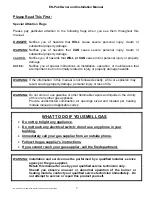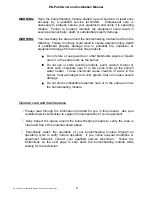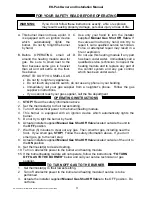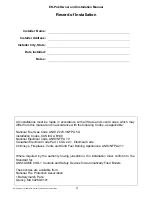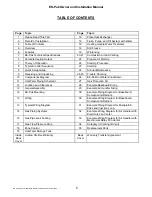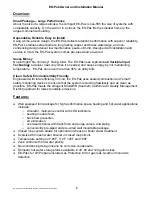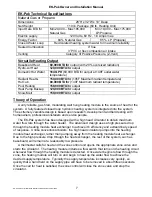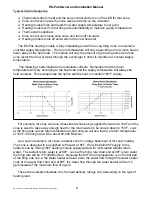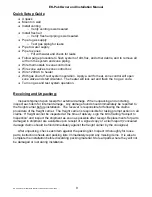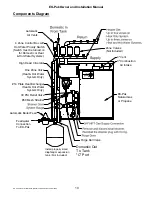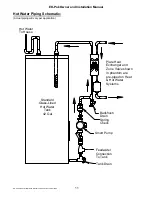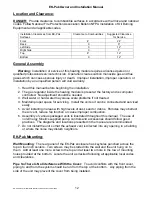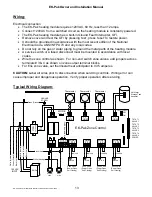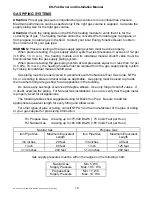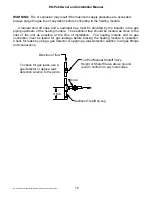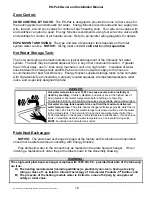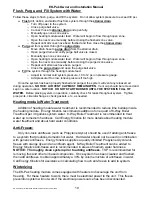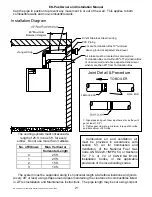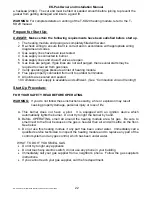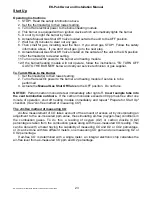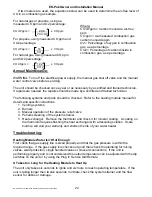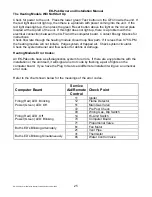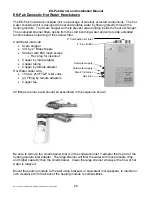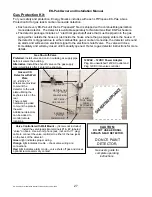
EK-Pak Owner and Installation Manual
EK-Pak Owner & Installation Manual First Edition December 2002
12
Location and Clearance:
DANGER:
Provide clearance to combustible surfaces in accordance with all local and national
codes. Follow National Fire Protection Association Bulletin NFPA Installation of Oil Burning
Equipment and all applicable codes.
Installation Clearances from EK-Pak
Surfaces
Clearance to Combustibles
Suggested Clearance
for Service
Front 4”
24”
Back 0
0”
Left Side
0
12”
Right Side
0
1”
Top
8”
12”
Bottom 0
12”
General Assembly
Warning:
Installation or service of this heating module requires a licensed person or
qualified professional service technician. Operation creates carbon monoxide gas and flue
gases which can cause serious injury or death. Improper installation, improper operation, or
installation by an unqualified person will void warranty.
1. Read this manual before beginning the installation.
2. The gas regulator inside the heating module is preset at the factory and is computer
controlled. No adjustment should be needed.
3. Well water or hard water may cause scale problems if not treated.
4. Maintain proper space for servicing. Install the unit so it can be connected and serviced
easily.
5. Avoid installing in areas with high levels of dust, sand or debris. Particles may obstruct
the air vent, reduce fan function or cause improper combustion.
6. Assembly of various packaged units is illustrated throughout this manual. The use of
non-Energy Kinetics supplied pump, controls and accessories should follow good
practices. The diagrams and locations presented in the manual are recommended.
7. Do not install the unit so that the exhaust vent is directed into any opening in a building
or where the noise may disturb neighbors.
EK-Pak Mounting:
Wall Mounting
: The rear panel of the EK-Pak enclosure has keyholes punched across the
top on four inch centers. Two screws may be started into the wall and the unit hung on to
them. Add at least one more screw to the top and at least two more in the row of mounting
holes provided at the bottom. Locate the unit as desired following all applicable local codes
and clearances.
Pipe So There Is No Interference With the Cover:
To avoid conflicts with the front cover,
piping to and from the system should be run from the top or the bottom. Any piping from the
side of the unit may prevent the cover from being installed.


